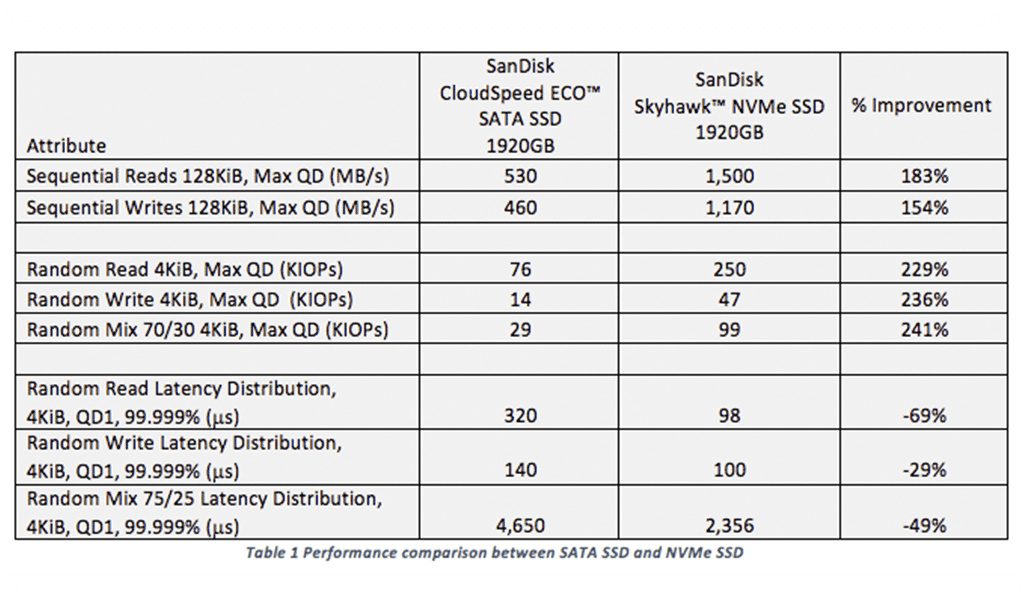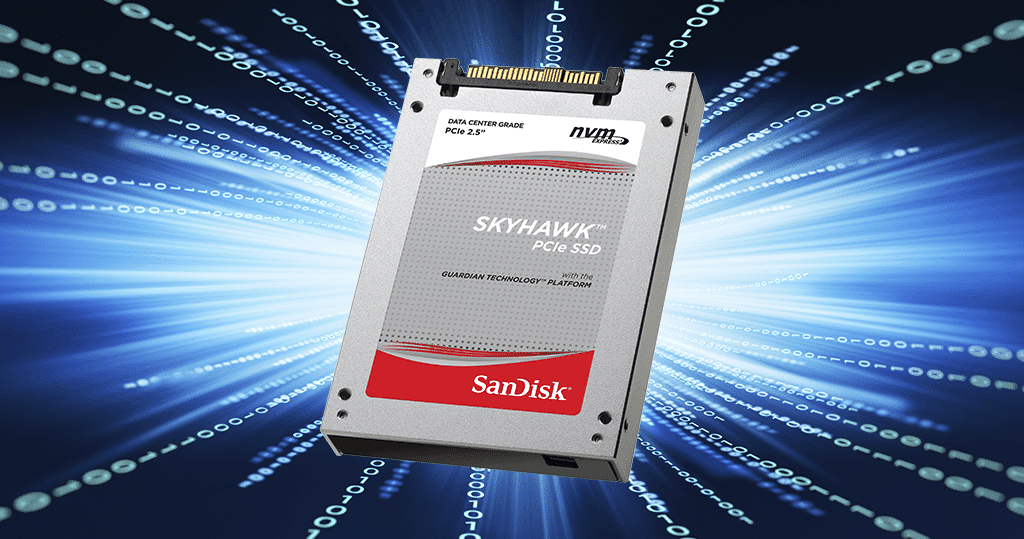In many new applications, data will live its entire lifespan in the Cloud. Created, managed, analyzed, acted upon and archived there. In fact, it has been reported that some analysts predict worldwide public-cloud spending in 2020 could be essentially double of that in 2016.
Whether cloud computing or cloud services, economics is a strong lure for some. For these companies, the Cloud is simply more cost effective and efficient for running applications and storing data.
So how do cloud providers keep up with the growing demand economically? How do cloud storage services offer high availability and consistent I/O performance delivered 24/7, 365 days a year?
Finding ways to maximize and streamline storage by running concurrent workloads across the storage infrastructure has become essential. Utilizing a tiered storage approach to optimize performance and cost is also key.
Meet the SkyhawkTM NVMe-compliant PCIe SSDs
I’m very excited to introduce the first NVMe-compliant PCIe SSDs from our SanDisk brand. Skyhawk[1] PCIe SSDs are optimized to give customers the ideal balance of fast and consistent performance, cost-effect storage and Quality of Service (QoS) to address large, unstructured data center workloads for cloud environments.
[Tweet “Skyhawk PCIe SSDs are optimized to give the ideal balance of fast & consistent performance.”]
They are a great addition to Western Digital’s broad portfolio of storage solutions for the Cloud. Now cloud providers can slide across a consolidated cost/performance continuum.
So, why Skyhawk?
For cloud workloads that need higher throughput and faster response time, historically SATA SSDs provide high performance and low power requirements. The SATA interface is also ubiquitous on the servers used in cloud data centers.
The challenge? The current version, SATA III, is almost nine years old and capped at 6 gigabits per second, without plans to improve performance or reduce latency. A more detailed comparison of SATA interface here: Top Considerations for Enterprise SSDS – A Primer.
NVMe protocol circumvents SATA bottlenecks for improved performance and reduced latency (response time). Designed for Flash and future storage class memory solutions, NVMe’s direct connection to the CPU via PCIe streamlines the storage device stack and is significantly faster than the traditional SATA interface (see Table 1 below).
All major server manufactures have added support for NVMe-based U.2 SSDs in their products. In a few years, we would expect to see deployed servers support the same number of NVMe U.2 drives as the SATA ones today.
The new Skyhawk NVMe-compatible PCIe SSDs offers up to 3.84TB in capacity and comes in a highly serviceable U.2, 2.5-inch SFF with a PCIe interface.
The Skyhawk SSD also integrates Western Digital’s 15nm NAND Flash with a new high-performance PCIe Gen 3 SSD controller. Its Guardian Technology™ platform guarantees Enterprise Class reliability, endurance and performance.
Skyhawk delivers high performance, consistency and associated Quality of Service (QoS) to meet the rigors of un-structured data workloads in the Cloud.
Key Benefits
- Nearly 3X the sequential performance compared to comparable enterprise SATA SSDs[2]
- Lower 12W power envelope enables broader deployment compared to 25W PCIe SSDs
- Compliant with industry standard NVMe 1.2 protocol with in-box drivers for all major OSes
- Available in two write endurance swim lanes (Standard and Ultra)
- Increased performance provides improved server consolidation
Specifications
- High capacities, ranging from 1.6TB to 3.84TB
- 2.5-inch hot-swappable U.2 SFF form factor
Typical Use Cases include Cloud, Object Storage, Microsoft® Storage Spaces Direct (S2D), Microsoft® Azure Stack (MAS), OLAP, File/Web Servers, Media streaming or VoD.
The Skyhawk NVMe compatible PCIe SSD is currently sampling to select OEMs, with general availability Q2 of this calendar year.

[1] The Skyhawk™ trademark is licensed for use from Western Digital Technologies, Inc.
[2] Compared to SanDisk CloudSpeed™ Gen. II SATA SSDs
This blog post and other posts on this website may contain forward-looking statements, including statements relating to expectations for our SSD product portfolio, the market for our products, product development efforts, and the capacities, capabilities and applications of our products. These forward-looking statements are subject to risks and uncertainties that could cause actual results to differ materially from those expressed in the forward-looking statements, including development challenges or delays, supply chain and logistics issues, changes in markets, demand, global economic conditions and other risks and uncertainties listed in Western Digital Corporation’s most recent quarterly and annual reports filed with the Securities and Exchange Commission, to which your attention is directed. Readers are cautioned not to place undue reliance on these forward-looking statements and we undertake no obligation to update these forward-looking statements to reflect subsequent events or circumstances.



